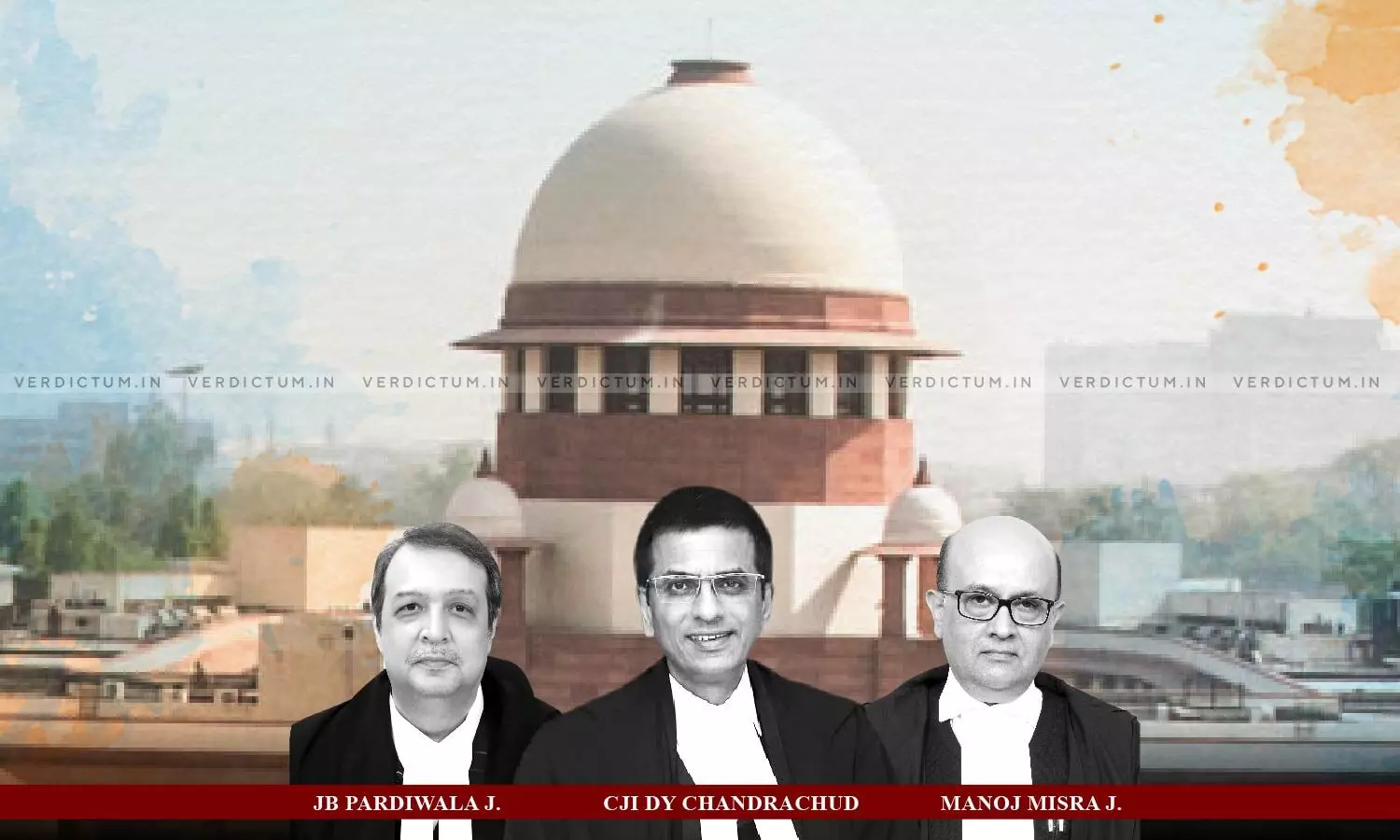
Apex Court Directs Personal Appearance Of Chief Secretaries Of States Which Do Not Appoint 'Special Adoption Agencies' By 30 August
 |
|The Supreme Court, today, gave the final opportunity and directed the Chief Secretaries of various States to file a compliance report as to why Special Adoption Agencies ('SAAs') have not been set up despite previous directions from the Apex Court and repeated opportunities.
The Court was hearing the petition seeking suggestions of the Court in simplifying Child Adoption in India.
The Bench of Chief Justice Chandrachud, Justice J.B. Pardiwala and Justice Manoj Misra directed, "We are compelled to take coercive proceedings against the State Governments and UTs since despite repeated efforts and repeated opportunities, the SAAs have not been set up in all districts. We accordingly direct the Chief Secretaries of all the States and UTs as mentioned in Annexure E (states which have not complied) to file a compliance report on or before 30 August, failing which they shall remain personally present before this Court on September 2 to explain why they should not be proceeded against the exercise of contempt jurisdiction. All the State and UTs shall file their Affidavits explaining whether the timelines which are stipulated in the regulations for facilitating the process of adoption are being duly complied and it shall also disclose data on the actual time which is being taken for completing the process. They shall also indicate the reasons why the timelines as stipulated in the regulations are not being complied with."
The Court also noted, "Out of the 34 States and UTs...The ones which are fully compliant are Chandigarh, Goa, Kerala and Rajasthan...States with less than half a number of SAAs are Andhra Pradesh, Arunachal Pradesh, Chhattisgarh, Delhi, Haryana, Himachal, Nagaland, Punjab, Telangana, U.P. and Uttrakhand. For example in Uttar Pradesh out of 75 districts, only 61 have functioning SAAs. Despite previous orders, we find that the states and UTs are in default."
ASG Aishwarya Bhati appeared on behalf of the Respondent.
The Petitioner appeared in person and submitted, "In the population of forty crores, the adoption of 4-5000 is very low...I inquired about the practices and usages across the country and I came out with a detailed solution which I have mentioned in my application...The question is, how do adoptions take place in the absence of any clear-cut guidelines, formats, rules, or operations?"
To this CJI replied, "Difficult for the court to lay down any guidelines...because the HAMA adoptions are laid down in the Statute. Once the statute is very clear about the conditions, it may not be appropriate for the court to prescribe guidelines now. Whatever you are asking is already happening widely in the country, so what are you really asking for? What guidelines do you want from us?"
The Petitioner submitted, "I only seek a reportable judgment laying down the law and only you can do it."
CJI then said, "I am not sure we can issue these guidelines.. but let us study them and let us see the feasibility. Today we cannot do anything since the statute prescribes it already.. if there is any ambiguity we can clarify it in a manner not inconsistent with the statute...These issues have wide-ranging ramifications for us to issue guidelines now. So let us study it first.."
Advocate Rohan Shah also appeared and submitted, "The statistic is given state-wise....the prescriptive period to declare a child legally free for adoption is of two months... there are 66 cases out of a total of 868, so only 7.6% of all the cases get dealt with within the prescriptive period of two months."
On March 15, 2024, the Court had directed all the States and Union Territories to give the data related to applications for adoptions, the number of children, children in foster care, and children who require foster care. etc. to the Ministry of Women and Child Development on or before April 14, 2024, in the pleas seeking suggestions of the Court in simplifying Child Adoption in India.
The Supreme Court on November 20, 2023, had broadly classified suggestions given into five categories: (i) The need to ensure expeditious identification of children falling in the OAS category; (ii) The need to revamp administrative infrastructure in the States, particularly, in the SAAs and DCPUs; (iii) The need to ensure accountability in the maintenance of the timelines laid down for completing every process in the stage of adoption; (iv) The need to compile adequate data so as to channelize children who are placed in Foster Care (Children in need of care and protection) into the adoption process; and (v) The need to clarify that the process of adoption under the Hindu Adoption and Maintenance Act (HAMA) is independent of the process which has been stipulated under the Juvenile Justice Act 2015.
The Court had also discussed these heads separately and said that all States and Union Territories are peremptorily directed to ensure that within every district falling within their jurisdiction, SAAs as required by the Juvenile Justice Act 2015, shall be set up by 31 January 2024.
The Court had also directed the Nodal Department in charge of implementing the Juvenile Justice Act 2015, whether it is the State Department in charge of Women and Child Development or, as the case may be, Social Justice and Welfare Development shall positively communicate compliance to the Director CARA and the Secretary, Ministry of Women and Child Development by 31 January 2024.
Accordingly, the matter is now listed on September 2, 2024.
Cause Title: The Temple of Healing v. Union of India (W.P. (C) No. 1003 of 2021)